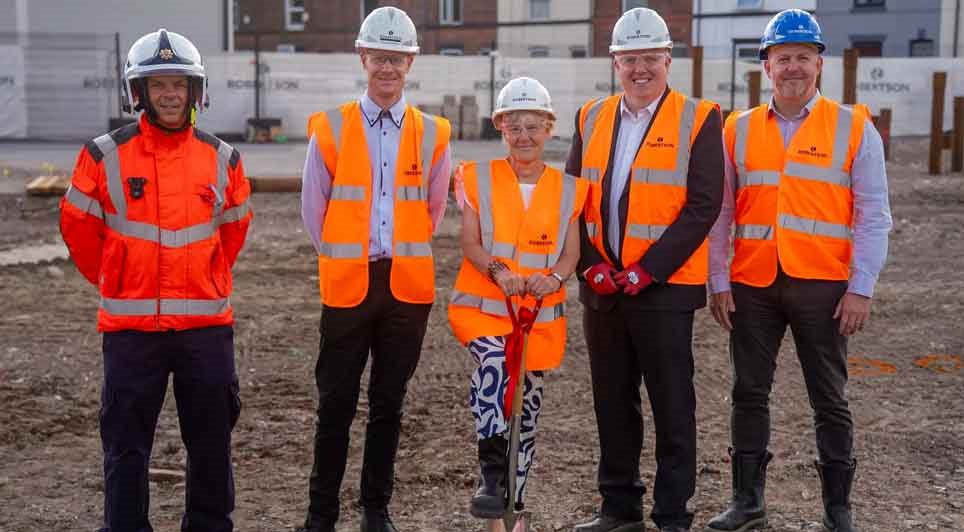newton-membranes.co.uk/news/basement-waterproofing/waterproofing-an-existing-basement/
When you are looking at waterproofing an existing basement you have a large variety of products available at your disposal. The real key is choosing the right product, the right preparation technique and for the right price to achieve the degree of waterproofing you need for your intended use of the basement.
So let's go through a quick guide for you to get the ball rolling. When waterproofing an existing basement, you are either going to:
1. Hold water back by applying a system to the basement such as cementitious slurry or similar or
2. Install a cavity drain system which will divert the water and get rid of it prior to damaging internal finishes.
Firstly what needs to be considered is – what are you using the space for? If it is a bike shed then you are not going to insulate it or go to a massive effort to rake out the mortar joints etc. The big cost will be the prep here and of course it will take a while for the render approach to dry. If you are happy with the risk of water ingress coming out on the floor then maybe go for a cavity drain membrane as a damp proof membrane and accept if water comes in you will deal with it then.
If it is going to be habitable accommodation it needs to be totally dry with no water or water vapour acceptable. You have two choices.
A. Waterproofing an Existing Basement – Barrier Option
This barrier will require preparation by a trained waterproofing expert. To make it 100% watertight means 100% workmanship which keep in mind is very difficult to achieve. In all circumstances with an internal barrier, for it to be effective you will need to do not only the walls but also the floors. Make sure you have a good existing slab here or even a new one to make it effective. Bricks on edge or flags on soil will not do for habitable accommodation they will need to be removed and can be re-instated later.
B. Waterproofing an Existing Basement – Cavity Drain Option
This would be the recommended solution. A drained cavity system is ideal. When waterproofing an existing basement with this system you will have a series of dimpled sheet membranes (usually 8mm in depth) which are mechanically fixed back to the building fabric using a waterproof MultiPlug (plug with a waterproof seal which acts like a rawl plug that you can fix into) then depending upon the finish required either a plain 8mm membrane with battens on plugs or a frame work tied back into the plugs or a meshed dimpled sheet which you can render onto. These systems act as water management system in your existing basement, moving any moisture or water behind the dimples and down to a internal drain which are installed at the wall floor junction. The drain can then either feed out to an open elevation or to an existing drain or a sump and pump.
Prior to using either system here’s a quick guide to the pro's and cons of both.
Option A – Barrier
Disadvantages - Any applied system will need preparation to the substrate prior to application which can prove very disruptive and messy and a real problem in general. Depending upon the substrate you may have to rake out the mortar joints, sand blast, scabble, hack off to get back to the substrate and prepare it ready for the applied barrier.
Another disadvantage is that wet trades are introduced, as you are potentially making a wet project even more damp by introducing a wet solution. This introduces problems with the waterproof barrier in terms of drying times. Drying out times are one of the most frustrating elements of the barrier approach this can significantly impede a building programme especially when it comes to be able to decorate the finish project
A final disadvantage here is the inability to fix things like shelving units into the barrier without puncturing the barrier. This will also invalidate any guarantee that was offered by a professional installer.
Advantages - The biggest advantage with the barrier is if placed perfectly it will negate the need for installing any form of sump system which saves on future maintenance costs.
Option B – The Internal Drained Cavity System
Advantages – The drained cavity has many advantages the main ones being:
•Minimal surface preparation required, if any
•Can be installed with no wet trades or drying out times if designed correctly
•Can be decorated quickly if an independent dry lining frame is used
•Does not push water to other areas of the project – as could happen with a barrier
•Can be used on all Listed Buildings as it is fully reversible – barriers are not
Disadvantages - The biggest disadvantage is that if you are below invert level you will need to use a pump which will mean ongoing maintenance.
So there you are some very important things to consider when choosing your basement waterproofing technique. The most important thing really is to make sure whatever system you use put into the budget to get a professional waterproofing contractor to undertake the works. Contact the manufacturer and check that they know the installer and can recommend them. This way you will have a course of action should the system be installed poorly.
Read more about Newton System 500 Cavity Drain Membrane Solution (link ‘Newton System 500 Cavity Drain Membrane Solution’ to newton-membranes.co.uk/basement-waterproofing/
Further Information and Registered Installers
For further advice about waterproofing an existing basement or for a list of Newton Specialist Basement Contractors (NSBC) in your area, please ring Newtons on 020 7237 1217 or e-mail: info@newton-membranes.co.uk
Construction News
13/10/2011
Waterproofing An Existing Basement – A Quick Guide

03/07/2025
Associated British Ports (ABP) has submitted a reserved matters application for 103,000 sq ft of speculative industrial and logistics space at Helm @ Immingham.
This marks the first phase of development at the 227-acre site.
The scheme will deliver a range of purpose-built units from 4,820 sq ft

03/07/2025
First Choice Homes Oldham (FCHO) is set to begin a major new phase of energy efficiency upgrades this month, with a £6.1 million investment aimed at improving 645 homes across the borough.
Starting 14 July, properties in Abbey Hills, Roundthorn, Shaw, and several estates in Chadderton will receive

03/07/2025
Plans to boost North Lincolnshire's transport infrastructure have reached a significant milestone with the completion of Phase 1 of the M181 'southern junction' project.
Led by North Lincolnshire Council in partnership with National Highways, the multi-million-pound scheme includes the construction

03/07/2025
The multi-million-pound refurbishment of Watford Colosseum has reached practical completion, with the historic venue now officially handed over to operator AEG Presents UK.
Led by Watford Borough Council and delivered by Morgan Sindall Construction's Northern Home Counties division, the major upgra

03/07/2025
Sigma Capital Group has announced the acquisition of four new development sites worth around £100 million in gross development cost (GDC), continuing its strategic partnership with Vistry Group.
The projects will deliver 415 new single-family rental homes across England, further cementing Sigma's

03/07/2025
A major £215,000 upgrade to the Winsover Road level crossing in Spalding is set to begin this Saturday night, 5 July, aimed at improving rail reliability and ensuring safety for motorists, pedestrians and rail users.
The essential works will see a full replacement of the life-expired crossing surfa

03/07/2025
A former office building in Cardiff Bay has been given a new lease of life, with 33 high-quality council apartments now handed over to Cardiff Council as part of a wider redevelopment to deliver 78 new homes.
The Scott Harbour building, once a commercial office block, is undergoing a major conversi

03/07/2025
Social value specialist Loop has launched the UK's first monetised social value metrics tool tailored specifically for the housing sector, offering developers a new, data-driven approach to strengthen planning applications, engage communities and showcase real-world benefits.
Developed in partnersh

02/07/2025
Construction is officially underway on the new Whitefield Community Fire Station, part of Greater Manchester Fire and Rescue Service's (GMFRS) £38 million Estates Improvement Programme.
Led by Robertson Construction North West, the project will replace the former fire station on Bury New Road with

02/07/2025
Hull City Council has officially appointed Esh Construction to lead a major repair and strengthening programme on Drypool Bridge, one of the city's key transport links.
The project will be delivered in partnership with engineering consultancy Mason Clark Associates.
Work will begin on the south s
 UK
UK Ireland
Ireland Scotland
Scotland London
London











